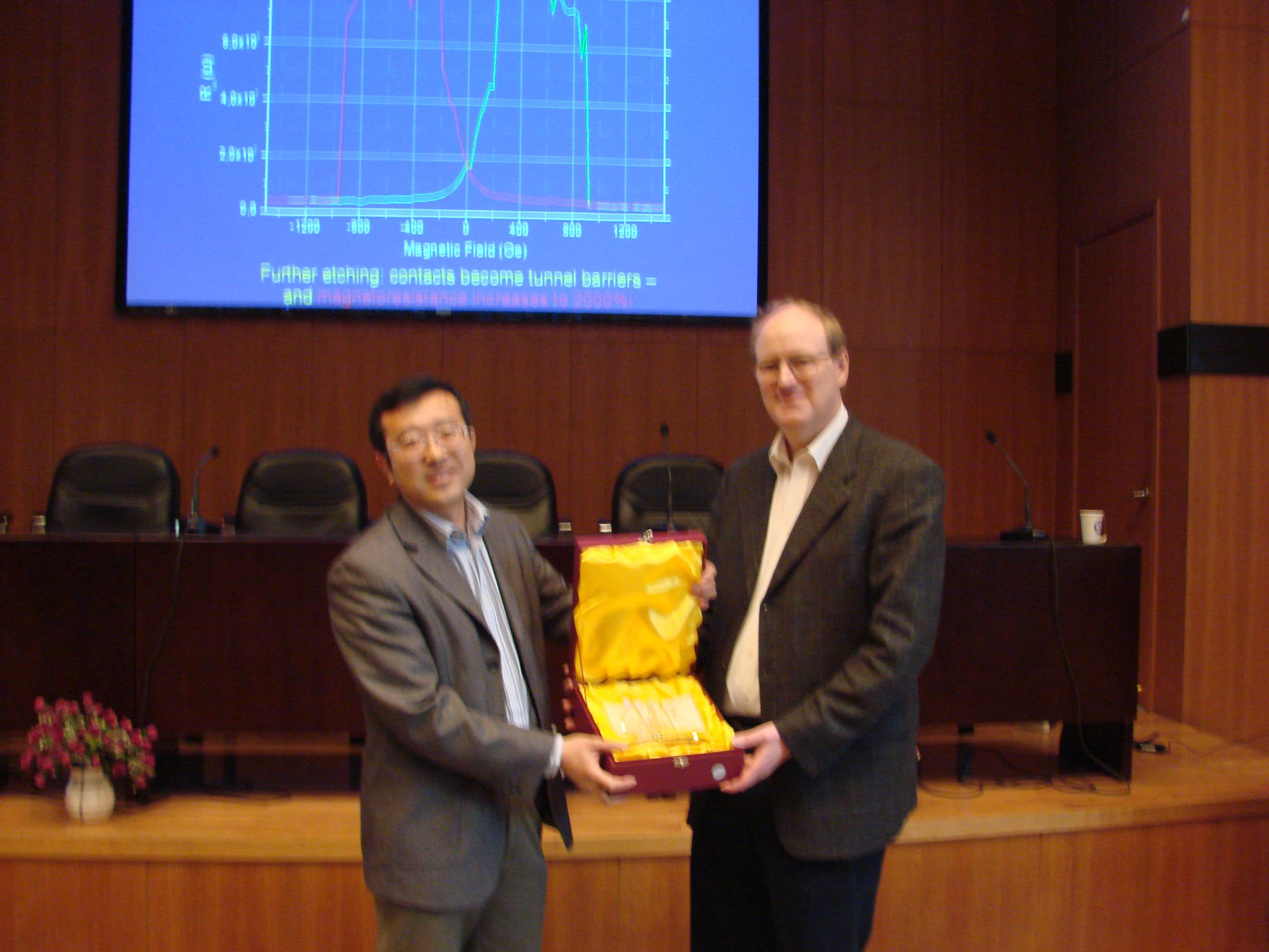
Abstract
Spin injection into semiconductors has been a topic of great interest during the past years. After its realization in 1999, various concepts have been tried more or less successfully in order to achieve high spin injection efficiencies at room temperature. One of the results of this research effort is a large progress in the fabrication of ferromagnetic semiconductors and a profound understanding of the properties of this special class of materials.
However, besides their usefulness for spin injection experiments, the intrinsic properties of ferromagnetic semiconductors present also new possibilities for interesting transport studies. The large spin polarization of the carriers combined with the band structure of a semiconductor and a large spin orbit coupling result in transport properties which are highly anisotropic and much different from what is known from ferromagnetic metals.
E.g. nanoconstrictions in thin (Ga,Mn)As layers can be used to trap domain walls and to investigate the resistance of the walls in a well controlled manner. When these constrictions are made small enough, they can be completely depleted of carriers, yielding a lateral tunnel barrier. In this case the magnetoresistance of the nanoconstriction can be as high as 2000%.
In a vertical geometry, when a single (Ga,Mn)As layer is combined with a tunnel barrier, momentum conservation can lead to a novel spin-valve like effect which is purely dependent on the anisotropy of the density of states which changes with a change of magnetization. This effect is of the order of a few %. However, if this effect is used in a device with two magnetic layers and a crystalline tunnel barrier the magnetioresistance is strongly increased. A lower limit of the magnetoresistance of 150,000% has been measured , however the real effect is probably much larger.
In addition, lithographic patterning allows for local anisotropy control which can be used to build non-volatile memory devices. These lateral devices are fabricated using a single layer of (Ga,Mn)As and allow for electrical read-access.
In the presentation various experiments and theoretical approaches will be presented. 200px" />
